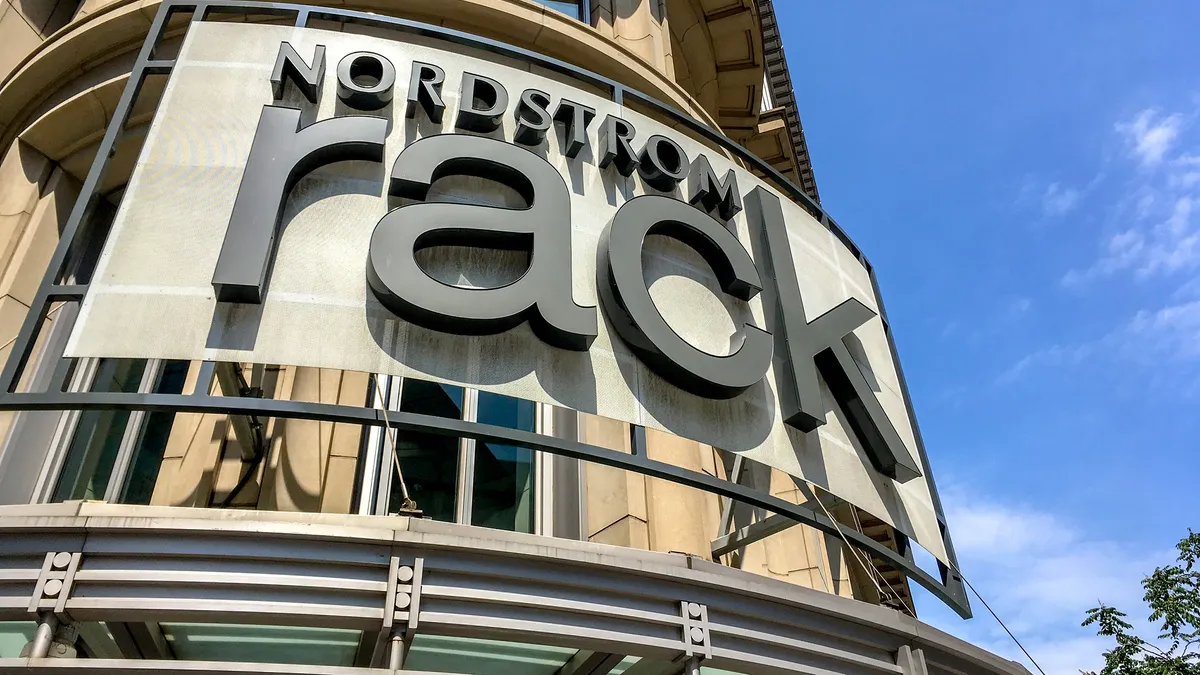Dive Brief:
-
Nordstrom, usually a retailer with a firm grip on inventory, experienced a supply-demand mismatch that interfered with its holiday quarter. Ending inventory in the fourth quarter was down 3% from last year, which was above plan, according to a company press release Tuesday.
-
Net sales in the period fell 20% year over year, slightly exceeding its own expectations, while e-commerce rose 24% and was 54% of sales. In the full-line business, net sales fell 19% while at the Rack off-price business net sales fell 23%. Nordstrom doesn't report comp sales.
-
The inventory issues squeezed margins, and EBIT reached just $30 million, or 0.8% of net sales, from $299 million, or 6.7% of net sales in the year-ago period. Net earnings fell 82.9% to $33 million.
Dive Insight:
The pandemic made running a retail business more difficult, scrambling consumer demand, especially in apparel, and wreaking havoc on supply chains. Nordstrom executives on Tuesday said their inventory planning was disrupted by shipping delays that forced markdowns later.
This is an unusual problem for Nordstrom, which was an outlier in the sector, as most retailers faced lean holiday inventories rather than bloated ones, BMO Capital Markets Managing Director Simeon Siegel noted in emailed comments.
"This stands in contrast to the vast majority of the universe calling out too lean inventory which encouraged meaningfully lower markdowns and higher margins," he said.
The correction is underway, "including cancellation of orders, return to vendor and clearance activity where appropriate," CFO Anne Bramman told analysts Tuesday, according to a Seeking Alpha transcript. Plans are to cut the sales-to-inventory spread by half by the end of the current quarter, when inventory is expected to be realigned at Rack. Nordstrom full-line inventory is expected to be realigned in the second quarter, Bramman also said.
This problem isn't just a supply chain issue, however, according to GlobalData Managing Director Neil Saunders, who noted that the 19% sales decline at Nordstrom's full-line stores is among the worst in the department store sector. Nordstrom's stores are in cities and malls with particularly weak traffic, but that's not entirely it, either, he said.
"[G]iven that others also faced this pressure, and that Nordstrom has a very strong digital proposition, it does not explain away the dismal outcome," Saunders said. "For that we must look to the assortment over the holiday period which, for some reason continued to be skewed to expensive garments designed for pre-pandemic social occasions. Admittedly, some of these may have been bought before the virus hit but, given that Nordstrom had almost a year to pivot away from such low demand categories, we were surprised by how out of kilter the offer was with consumer demand."
The off-price business had a similar over-supply of formal garb, which few consumers have had any use for as the pandemic has kept them home. The sales decline at Rack is "significantly worse than the off-price segment and shows none of the recovery that has been witnessed at other players like TJMaxx and Ross," despite advantages like e-commerce and omnichannel, Saunders said.
"That Rack is lagging speaks to underlying problems in the business that no one at Nordstrom ever seems to address," he said, noting that its slim home goods assortment also hurt, while the category was a winner for rivals. "Again, Rack can be excused for not having this early in the pandemic, but a year-in the excuse is no longer valid."
Saunders had some praise for the plans recently outlined by Nordstrom during its investors' meeting, but warned that they're incomplete.
"[T]hey do not fully address the basic issues with the business and will not deliver in the near term," he said. "While we wait for Nordstrom to get its act together, the one saving grace is that it will soon lap the pandemic declines which will flatter its performance."













